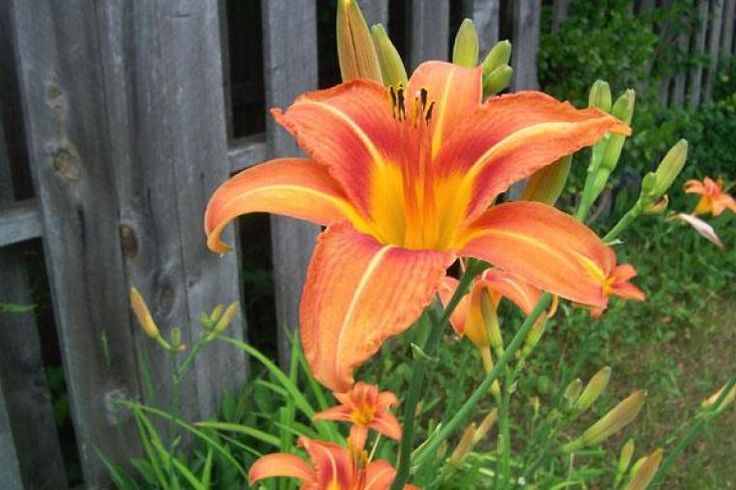Daylily
go.ncsu.edu/readext?1074827
en Español / em Português
El inglés es el idioma de control de esta página. En la medida en que haya algún conflicto entre la traducción al inglés y la traducción, el inglés prevalece.
Al hacer clic en el enlace de traducción se activa un servicio de traducción gratuito para convertir la página al español. Al igual que con cualquier traducción por Internet, la conversión no es sensible al contexto y puede que no traduzca el texto en su significado original. NC State Extension no garantiza la exactitud del texto traducido. Por favor, tenga en cuenta que algunas aplicaciones y/o servicios pueden no funcionar como se espera cuando se traducen.
Português
Inglês é o idioma de controle desta página. Na medida que haja algum conflito entre o texto original em Inglês e a tradução, o Inglês prevalece.
Ao clicar no link de tradução, um serviço gratuito de tradução será ativado para converter a página para o Português. Como em qualquer tradução pela internet, a conversão não é sensivel ao contexto e pode não ocorrer a tradução para o significado orginal. O serviço de Extensão da Carolina do Norte (NC State Extension) não garante a exatidão do texto traduzido. Por favor, observe que algumas funções ou serviços podem não funcionar como esperado após a tradução.
English
English is the controlling language of this page. To the extent there is any conflict between the English text and the translation, English controls.
Clicking on the translation link activates a free translation service to convert the page to Spanish. As with any Internet translation, the conversion is not context-sensitive and may not translate the text to its original meaning. NC State Extension does not guarantee the accuracy of the translated text. Please note that some applications and/or services may not function as expected when translated.
Collapse ▲by Eleanor Moyer, Clay County Master Gardener Volunteer
I’ve been blown away this spring with the season’s first flush of spectacular flowers! It’s gratifying to think there are months of flowers to follow. One of the easiest perennials to care for, easiest to grow, and consistently wonderful is Hemerocallis, also known as the daylily.
Despite its nomenclature, it is not at all a lily. Its name is Greek, ‘hemera’ (day) and ‘kallos’ (beauty) as each flower lasts but a day. Even though Hemerocallis fulva has been decorating American roadsides and ditches for centuries, colonists brought the plant from Europe after discovering it growing in Asia. The over 80,000 varieties of hybrids we have come to love are what decorate our summer gardens. They come in every shade but blue, have varieties that bloom early, mid, and late summer and even some that rebloom.
True lilies grow from bulbs, daylilies have large fleshy roots which make them excellent plants for erosion control. Find a location with at least six hours of sun. Soak the bare root in water for one to two hours. Loosen the soil, dig a hole with a mound in the center. Lay the center of the plant on the mound fanning out the roots. Cover with soil and water well. The crown (top of the root) should be about one inch deep. Add compost and mulch and keep watered until it becomes established. It is possible for a plant to need a year of growth before blooming. The optimal time for planting is spring or fall. Now would be a good time to spy on a neighbor’s or friend’s daylilies to see if there is one, they may want to share. For optimal flowering, daylilies should be divided every 4 to 5 years, so you would be doing them a favor! Divide by digging up the whole plant. Depending on the size, pull apart or use a shovel to break apart smaller sections. Replant these around the garden or give to a friend. They do not require much tending. Fertilize with a slow release or standard mix once in the spring and once in the fall. Since it is perennial, it will come back year after year.
The blooming period lasts two to three weeks, but there are 12 to 15 buds on each flowering stem (scape) with 4 to 6 scrapes per plant. If you plant varieties that bloom early, mid, and late, you could have a couple of months of flowers. When purchasing a variety, a height is often listed which refers to the height of the flowering scape. Some are as high as six feet! Paler shades do better in full sun, with deeper shades able to handle light shade. The plants are drought-tolerant but can also get their feet wet. They are virtually pest-free except for a recent fungus that causes streaks on the leaves. Remove and discard affected leaves. If that is not sufficient, spray with a fungicide according to label directions.
All parts of the plant are edible (except to cats) with a mild peppery taste. Wouldn’t one make a spectacular garnish for a salad! When cooked in a stew or soup it acts as a thickening agent. According to lore, if the blossoms open later than 7 a.m. or close before 7 p.m., look for rain. Daylilies can be planted in pots with the caveat that a regular-sized plant would need at least a gallon-sized planter. Happy gardening!




